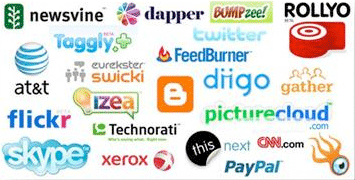Data solutions gurus SISRA Limited have announced the launch of their very own educational blog. These blog posts are written by SISRA’s experienced, passionate data consultants, each of whom have first-hand experience of working with data in a school environment. The purpose of the blog is to discuss current issues in the educational world.
What is digital citizenship? If you asked ten people to define it, you’d most likely receive ten different answers. Why is this term so difficult to define? It’s complicated, and the terms “digital” and “citizenship” are broad. Perhaps it’s because we are constantly evolving with upgrades and new ways to consume and produce electronic media? Or maybe we just don’t know enough about digital citizenship and our fear dictates our decisions to block and ban what we don’t understand? Whatever the reason may be, digital citizenship is everyone’s responsibility.
Much has been made of how powerful blogging can be in education, by experts such as David Mitchell. But how can online writing platforms benefit teachers? English and SEN educator ‘Cazzypot’ discusses how blogging has helped her over the last couple of years.

Late in 2012, I decided I'd start writing a local history blog. Although, having been an English teacher for the last 19 years, this possibly wasn't the most logical choice. I did write one history post, but it wasn't long before I realised that I had far more to say about issues that were happening In the world of education.

When I started my blog three years and 657 posts ago, I wasn’t sure where to take it. I knew I wanted to connect with other tech teachers so I used that as the theme. Now, thanks to the 491,000+ people who have visited, I know much more about the ‘why’. It’s about getting to know kindred souls, but there is so much more I’ve gotten from blogging. Like these:
We bloggers divide ourselves into two categories: 1) those who write short, under-1000-word posts and 2) those who write in-depth, lengthy articles. I’ve chosen the former. I like pithy ideas that my readers can consume in the time it takes to drink a cup of coffee. As a result, I’ve learned to be frugal with my words. I choose verbiage that conveys more than one-word’s-worth of information and I leave tangential issues for another post. Because I realise readers are consuming on the run, I make sure to be clear–no misplaced pronouns or fuzzy concepts like ‘thing’ or ‘something’.

‘Web 2.0’ is a term familiar to all teachers. Stated in its simplest form, it’s the set of interactive internet-based tools used by students to enrich educational opportunities. ‘Web 1.0’ referred to the act of accessing websites—nothing more. Students read websites, clicked a few links, and/or researched a topic.
Web 2.0—Web-based education basics--includes blogs, wikis, class internet homepages, class internet start pages, twitter, social bookmarks, podcasting, photo sharing, online docs, online calendars, even Second Life—all tools that require thoughtful interaction between the student and the site. For teachers, it’s a challenge to keep up with the plethora of options as the creative minds of our new adults stretch the boundaries of what we can do on the internet.

A community-driven platform for showcasing the latest innovations and voices in schools
Pioneer House
North Road
Ellesmere Port
CH65 1AD
United Kingdom